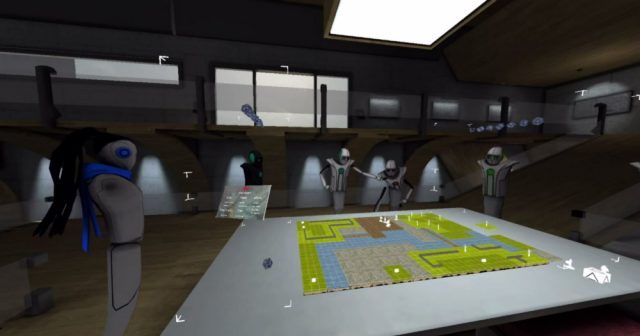The Fluid Classroom

It is possible that throughout this entire article you’ve been thinking about these immersive educational experiences as solitary — this could not be further from the truth. Immersive Education is only a single-user experience if educators decide to make it so. The aforementioned convergence of big-data and immersive education can be combined to give the classroom new ever-changing forms.
Multi-user educational experiences can be built in such a way that they connect students from vastly different locations in the globe, seamlessly pairing individuals with similar levels of experience, interest and sometimes even completely opposite skillsets to encourage collaboration around a particular problem. When you start looking at the classroom not as a physical room, but as an abstract place where collaborative learning exists, it can take any form at any given point time — and it won’t be lacking in human connections either. Remember that immersive technology will evolve until the point that the digital connections you see will be completely indistinguishable from the real world.
The key is to imagine the classroom not as a physical place, but as an abstract location where collaborative learning exists that can take on any form.
This is important for a variety of reasons — we don’t want education to be isolationist and we want students to be exposed to a variety of contexts and cultures — but this could also become a huge cost-saving measure. Schools are expensive to upkeep and take a lot of physical space. As the digital revolution reaches new heights, it is possible that all the costs we face today associated with real estate, human labor and logistics slowly shift into the digital realm, where everything is cheap, all materials cost the same, knowledge is abundant and all students can be universally and continuously connected in improved educational systems, saving hundreds of billions of dollars.

The classroom doesn’t even have to be tethered to any single digital experience — it can blend in seamlessly into our world, constantly present around you in unpredictable ways. Are you walking down the streets surrounding Bastille in Paris? Why not take a break and start a lesson about the Storming of Bastille on the spot as it transforms your environment, getting you 15 minutes off your year-long History quota?
These new ways to learn may sound fantastical, but are all achievable through smart integration of technology, design and imagination. The one certainty about the future ahead is that it’ll rock the present to its very core — and given the way that immersive technologies and artificial intelligence are going, it seems like we will have the opportunity to turn education into anything we can think of.
So given the option — what would you turn it into?
– – — – –
If this article resonated with you and you’re a technologist, designer, educator, artist or content creator interested in tackling these challenges, please contact me. Let’s do it together!







